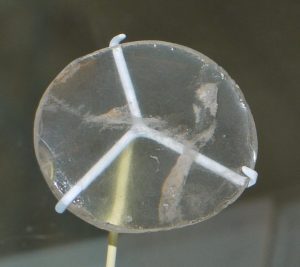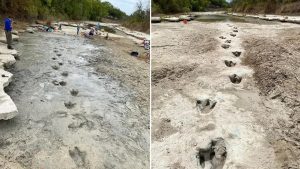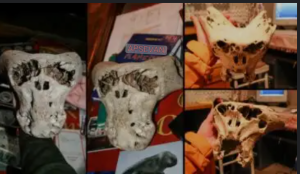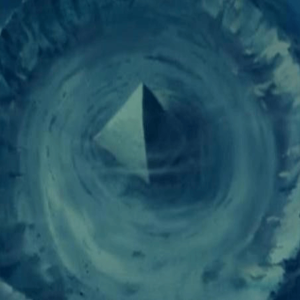Fukang: The Most Amazing Meteorite On Earth

When it slammed into the Earth’s surface, there was little evidence of the beauty within. However, opening the Fukang meteorite revealed a splendid sight.
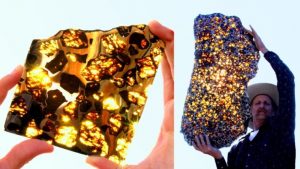
The Fukang meteorite was discovered in the mountains of Fukang, China, in 2000. Pallasite is a stony-iron meteorite containing olivine crystals. It’s thought to be 4.5 billion years old.
The Fukang Meteorite’s History:
A Chinese merchant got a mass from Xinjiang Province, China, with a weight of 1,003 kilos in 2003, in Fukang, China. He cut roughly 20 kilos from the main bulk. The meteorite was transported to the Tucson Gem and Mineral Show in February 2005. It was seen by Dr. Dante Lauretta, a professor of Planetary Science and Cosmochemistry at the University of Arizona.
Dr. Lauretta and a team of research scientists, including Dolores Hill, Marvin Killgore, Daniella DellaGiustina, and Dr. Yulia Goreva, investigated the mass at the Southwest Meteorite Center, Lunar and Planetary Laboratory, the University of Arizona in Tucson, Arizona, and were joined by Dr. Ian Franchi of Open University.
Fukang Pallasite Classification and Composition:
The Fukang pallasite has massive, gem-quality olivine or peridot crystals in a nickel-iron matrix of about fifty/fifty metal and olivine crystals.
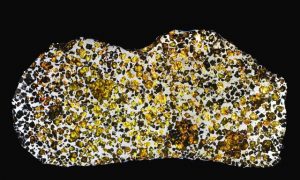
The crystals of most pallasites are black hazy, and extremely broken. In contrast, a few contain dazzling clear olivines that are less fragmented. Fukang is undoubtedly among the few with giant and clear crystals.
Olivines range in size from less than five millimeters to several centimeters, and their shapes range from spherical to angular.
The main bulk can see several sections of enormous olivine clusters with thin metal veins up to eleven centimeters in diameter. Fo86.4 has a molar Fe/Mg ratio of 0.1367, a Fe/Mn ratio of 40.37, and a Ni content of 0.03 wt percent. The metal matrix is predominantly kamacite, with an average nickel concentration of 6.98 wt percent. Some olivine contains vermicular sulfide (troilite). The oxygen isotopes are 18O 2.569, 17O 1.179, and 1 7O = 0.157.
Meteorite Specimens from Fukang:
The University of Arizona has a portion of type specimen weighing 31 kilos on deposit. Marvin Killgore holds an extra part considering the same amount as the main bulk.
Bonhams auctioned off the central mass in Manhattan in April 2008. The item was supposed to bring USD 2,000,000 to Bonhams. However, it remained unsold. A 19-by-36-inch “window” region was cut and polished to allow a peek inside the meteorite’s jewel parts.

